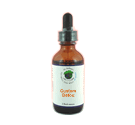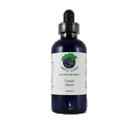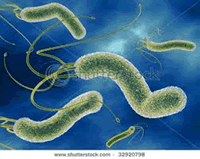|
|
Helicobacter
The natural habitat for Helicobacter is the stomach and upper digestive tract. Some species of Helicobacter have been found living in the lining of the upper gastrointestinal tract, as well as the liver of mammals and some birds. Helicobacter species are able to thrive in the acidic mammalian stomach by producing large quantities of the enzyme urease, which locally raises the pH from ~2 to a more biocompatible range of 6 to 7.
The most widely known species of the genus is H. pylori. Most people (over 80%) infected with H. pylori show no symptoms, so you could have it lurking and not know. Acute infection may appear as gastritis with abdominal pain (stomach ache) or nausea. When this develops into chronic gastritis, the symptoms, if present, are typically non-ulcer dyspepsia, bloating, belching and sometimes vomiting. Individuals infected with H. pylori have a 10 to 20% lifetime risk of developing peptic ulcers and a 1 to 2% risk of acquiring stomach cancer. Inflammation of the pyloric antrum is more likely to lead to duodenal ulcers, while inflammation of the corpus (body of the stomach) is more likely to lead to gastric ulcers and gastric carcinoma.
So how does a bacteria that can be found living in the stomach without causing any problems turn into something that can cause ulcers and lead to cancer? Dr. DeHaan has observed that stress and lack of dietary fiber are the main reasons that H. pylori turn into disease causing agents. Other germs, such as virus and bacteria can change the natural habitat for H. pylori and allow for issues as well. For example, go out to eat and get a touch of food poisoning, which disrupts the intestinal habitat. Then go to work and face some stressful issue. Suddenly you feel ulcer like symptoms because the H. pylori has become infectious. One of the best things you can do is take the IC-2 and eat lots of raw vegetables, make sure you include lots of raw cabbage!
This Quantum Formula antidotes the various species in the Helicobacter genus including urease and catalase.
|
|
| |
Helicobacter Detox Remedy
Detoxification of all Helicobacter toxins and poisons
$14.95
Read/Write Reviews
|
 Add
To Cart Add
To Cart |
 |
 |
Liquid Detox
Help that itch, burn, rash, infection.
$39.95
|
 Add
To Cart Add
To Cart |
 |
 |
Legionella Detox Remedy
Detoxification of all Legionella toxins and poisons
$14.95
|
 Add
To Cart Add
To Cart |
 |
 |
|
|
 Arthropod/Vector
Bacteria
Chemicals
Fungus /Mold
/ Yeast Metals Parasites Virus Other
Arthropod/Vector
Bacteria
Chemicals
Fungus /Mold
/ Yeast Metals Parasites Virus Other



